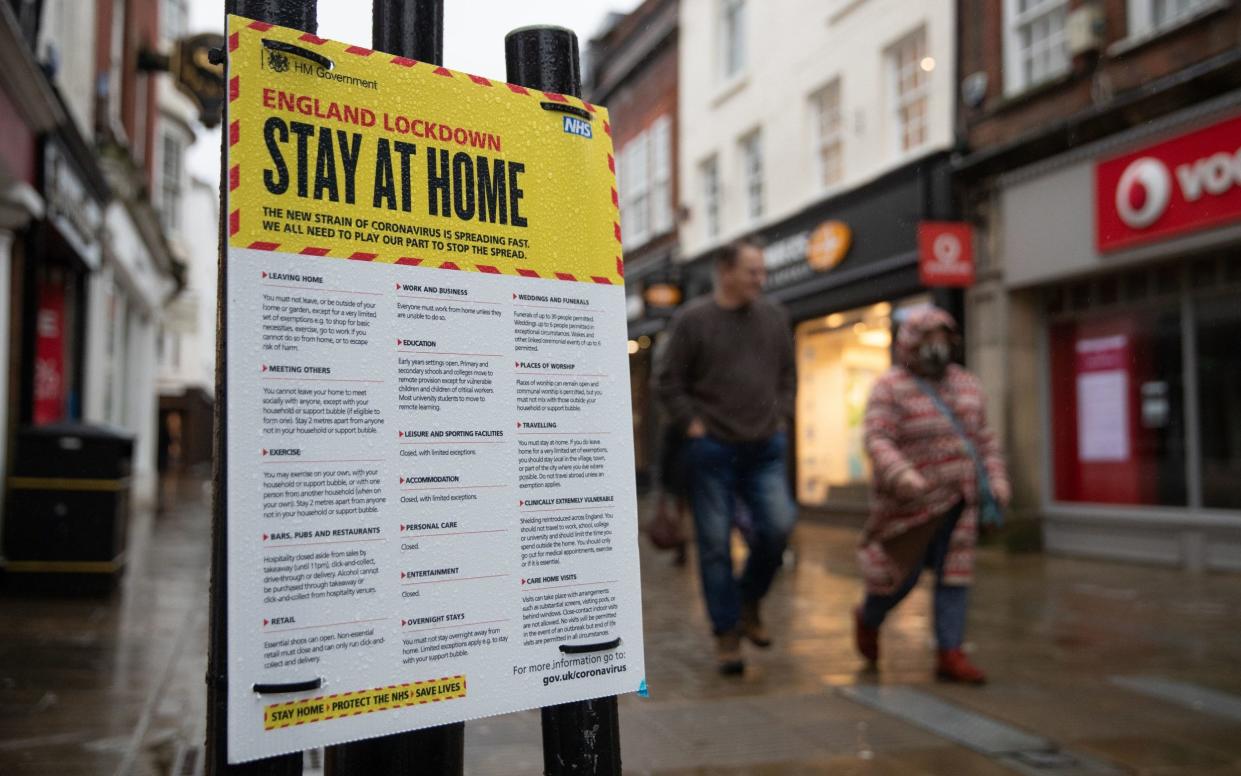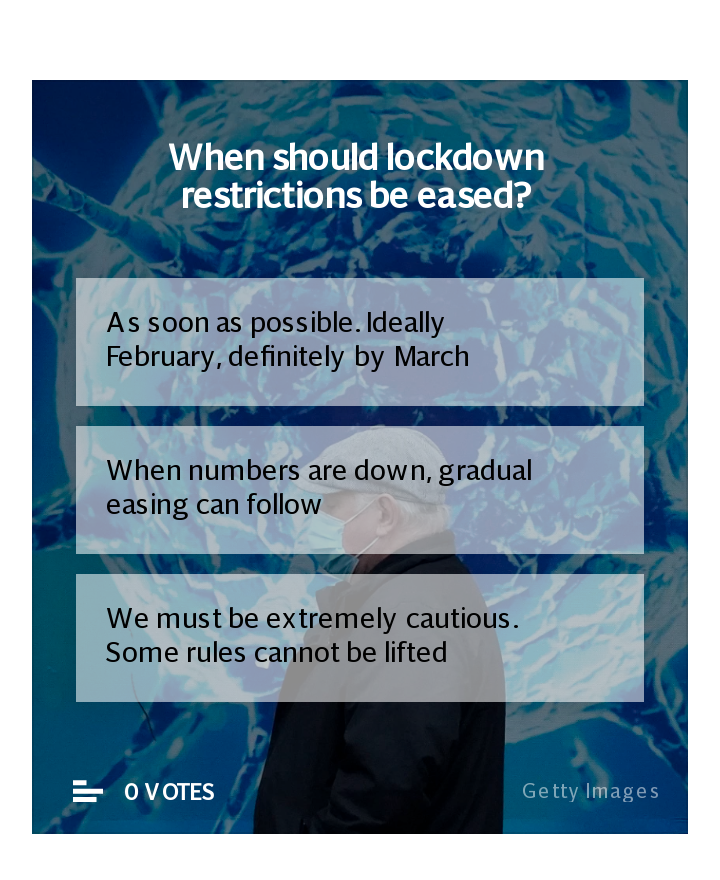Covid lockdown: Is there a case for an early release from restrictions?


Britain could be facing a long, slow slog to herd immunity, with Sir Patrick Vallance warning that at least 70 per cent coverage would be needed to stop transmission.
The figures suggest that if we carry on vaccinating at the current rate – about 1.8 million a week – we would not get there before June. But might there be a case for lifting restrictions earlier?
The important thing to realise is that this pandemic has a vastly different impact depending on age.
The latest Public Health England (PHE) figures show that the current risk of catching and dying from coronavirus for people aged 80 or over is 1,513 per 100,000 people. For a 50-year-old, it is just 42.7 in 100,000, and the risk continues to fall dramatically until it gets to 0.1 per 100,000 for children aged five to nine.
This matters because, if everything goes to plan, we will have vaccinated all the over-50s and vulnerable by the spring, which will have a huge impact. Although these 32 million people make up less than half the population, they account for more than 99 per cent of the deaths.
In contrast, healthy under-50s made up just 0.94 per cent of deaths in 2020 – fewer than 700 of the 72,178 deaths recorded by PHE in England. To put that in perspective, there are around 1,700 deaths from road traffic accidents annually in Britain.
Prof Chris Whitty, the chief medical officer for England, recently told the health select committee that society could not shut down forever and would need to determine what an acceptable level of risk and number of deaths would be.
"Just as we accept that in an average year 7,000 people die of flu, and in a bad flu year, 20,000 people die of flu," he said. "At a certain point you say actually, the risk is now low enough that we can largely do away with certainly the most onerous things that we have to deal with."
Watch: COVID-19 - Sir Patrick Vallance answers your questions on lockdowns, vaccines and returning to normal
Of course the deaths from Covid will not be limited to the unvaccinated under-50s. We know that one dose of the Oxford vaccine only achieves a 73 per cent efficacy rate, and after two doses that may fall to around 70 per cent.
These figures might be lower still once rolled out. However, with an efficacy rate of 70 per cent, take 100 people who would have become ill from Covid, even if they had the vaccine, and 30 would still get ill.
The Pfizer vaccine is likely to be higher at one dose – the joint committee on vaccination and immunisation suggests 89 per cent – but most people in first phase will be given the Oxford jab.
So, based on the same death figures as last year, in a very worst case scenario we might expect around 20,000 deaths to still occur even in the vaccinated groups. In practice, this is highly unlikely because the jabs appear to lower the severity of the virus even if the person still gets it, and may completely protect against hospitalisation and death.
More vaccination is also likely to lower transmission rates, if only because fewer people are coughing and sneezing and spreading the virus around. Yet even in the implausible scenario that we would still get 20,000 deaths a year from coronavirus after vaccination it may still be a price worth paying for release from restrictions.
Moreover, lockdown also comes at a high price in terms of other diseases. The Office for National Statistics (ONS) estimated that the two months of lockdown between March and May caused 16,000 non-Covid deaths, and predicted an extra 26,000 on top of that by this March.
It also forecast 81,500 deaths as a result of longer NHS waiting times, and a deep recession, within 50 years.
The country may have a final ace up its sleeve. The ONS estimates that around one in 10 people have already been infected with coronavirus in Britain and so will already be immune. The MRC Biostatistics Unit at Cambridge University thinks that number could be even higher, at around 10.7 million infections in England alone, or around one in six people.
And the prevalence appears to be higher in younger groups. The MRC estimates that a quarter of those aged 25 to 44 have had the virus, reaching 29 per cent of those aged 15 to 24 – so the under-50s may be more protected than we realise.

Epidemiologists are naturally over-cautious. It makes far more sense for them to exercise an abundance of wariness, because keeping deaths down not only saves lives, but also their careers.
While this is also true of politicians, it is not their only concern. Livelihoods must also be protected, as well as the economy, personal freedoms and mental health.
Maybe it is now time to have the difficult conversation and discuss what is an acceptable level of risk.
Should lockdown restrictions be lifted sooner rather than later? Share your view in the comments section below
Watch: Should I book a holiday in 2021?

